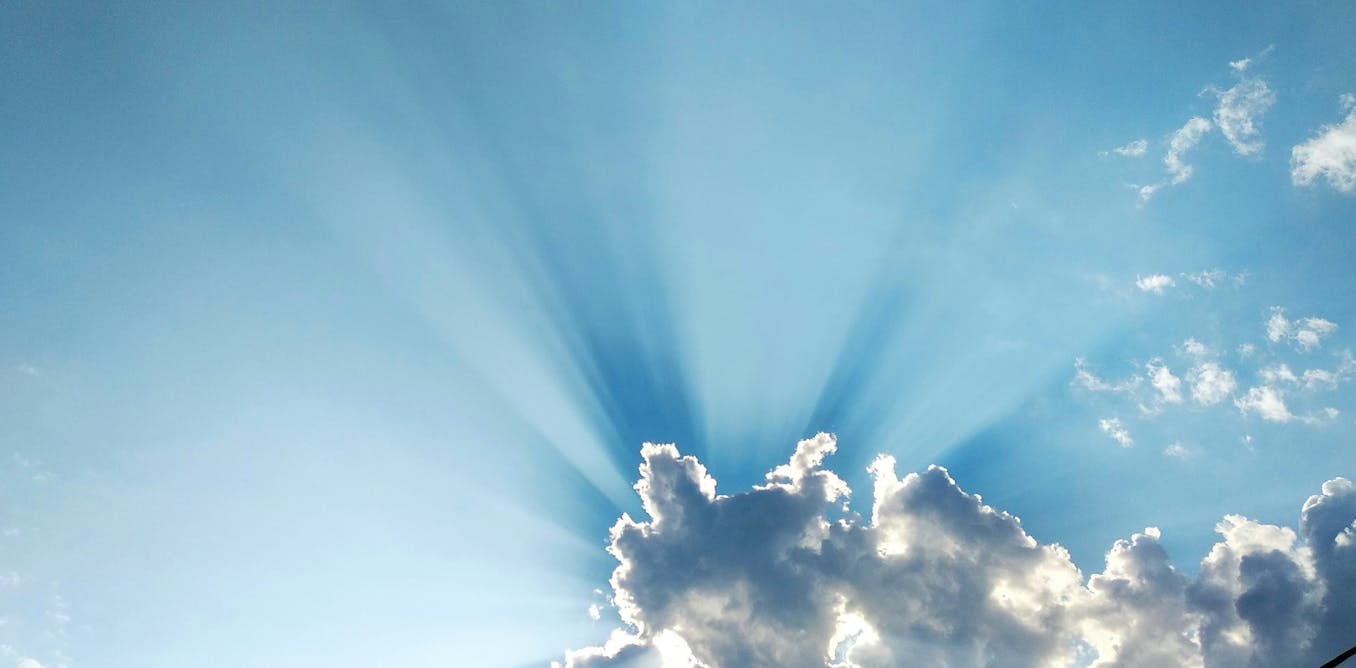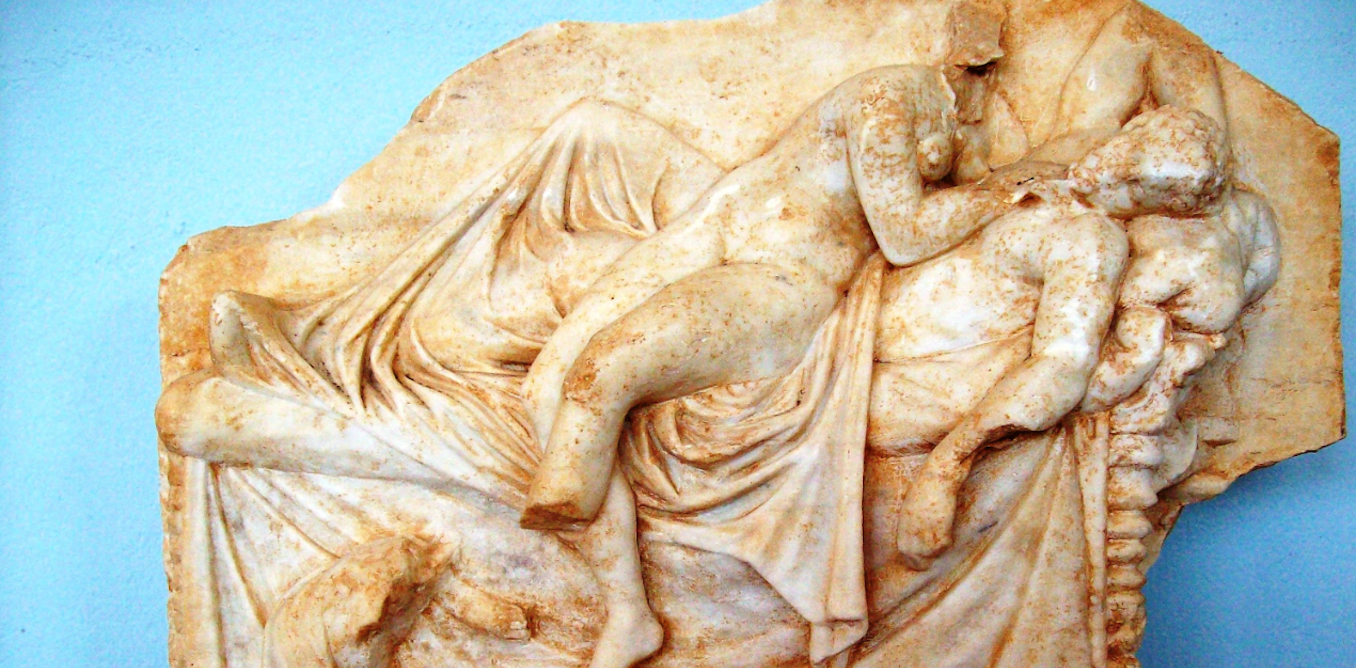“I want to be seen,” artist Ahmed Umar told the co-curators of the third Toronto Biennial of Art, Dominique Fontaine and Miguel A. López. “I desire to raise awareness within others about the profound validity of my emotions and existence.”
Umar’s sentiment, though rooted in their singular context, reverberates throughout this show. Titled “Precarious Joys,” the exhibition (through December 1) takes visibility as its central theme. It’s a show about the joy in recognition—and the danger involved in it. Some 55 artists are on hand to explain why, when faced with issues of citizenship, Indigenous erasure, climate disaster, gentrification, and more, they choose to endure.
Umar, a queer activist who fled their native Sudan for Norway as a political refugee, is showing a new video installation, titled Talitin – The Third (2023–24), in which they pay homage to three famous Sudanese love songs written by queer poets. The dark irony here is that homosexuality is criminalized in Sudan, and the authors are explicit about the subject of their longing. Umar performs each song in the Haqeeba style unique to Sudan that marries traditional vocals with Western jazz, and is resplendently clad in the likeness of each poet.
It’s one of the best works I’ve seen this year. The piece gorgeously exposes the hypocrisy of invisibility, as anyone familiar with the lyrics should notice the forbidden yearning embedded within them. To be ignorant of love is a willful choice when presented so honestly.
Umar’s piece plays in the Auto BLDG, one of 11 sites used by the biennial, whose venues also include the airport and Union Station. The Art Gallery of Ontario has one of the starriest contributions, Sonia Boyce’s Feeling Her Way (2022), which came straight from her installation for the Golden Lion–winning British Pavilion at the 2022 Venice Biennale. Five channels play the improvised performances of Black female musicians, their voices harmonizing and clashing at different intervals. The gallery is part of the fun, too, decked out in a riotous, tessellating wallpaper of musical homages and studded with golden geometric structures.
In a departure from standard curatorial methodologies, even those used by the last curatorial team, Fontaine and López didn’t ask artists to respond to a theme of their choosing. Rather, they determined the show’s structure in response to the hundreds of conversations had with artists over two years. Those discussions gave birth to four shared concerns: home, polyphony, precariousness, and joy.
It was easy to approach this biennial suspicious of the curators’ methodology. To follow the artists’ ambitions, it seemed, was a way of critic-proofing the product. A cynic might say that the curators have offered a framework that can’t fail: if the artists wanted it, it must be good.
However, after getting to know Toronto some, conventional curation seems ill-suit, at least currently, to this setting. The press materials emphasize the diasporic nature of Toronto, the most populous city in Canada, which counts as one of the most multicultural cities in the world. Its Chinese and South Asian neighborhoods date their founding to the 19th century, and the region is the ancestral territory of the Huron-Wendat, Haudenosaunee, and Anishinaabe peoples. But rents are rising, and a housing crisis continues. Community and tradition—art or otherwise—may fade without public intervention.
Also, this is a young biennial, with just three editions staged in ten years. That means the exhibition has been tasked with integrating a city that lacks the sort of obvious art genealogy of, say, Venice, into a global narrative. In other words, the story of Toronto (like much of the actual city) is under construction. It figures that the curators took guidance from artists like Morris Lum, whose large-scale photography, installed in Union Station, is dedicated to the disappearing Chinatown.
There are no spectacles in this show, which is light on provocation and material excess, continuing a trend seen in Venice and at the last Whitney Biennial. There’s a lot of inherited art forms, like weaving, traditional dance, and song. There’s even cuisine: Sameer Farooq’s Flatbread Library, a large-scale sculpture of baked goods made in tandoors by Toronto’s south and southwest Asian bakeries, neatly visualizes food migration.
Chilean-born artist Cecilia Vicuña, one of the most high-profile names on the roster, typified the sensibility. She has contributed several entries from her long-running sculpture series “Lo Precario (The Precarious).” The intimately scaled works consist of cast-off objects—seeds, shells, glass, plastic, stone—that are meticulously fused together and balanced on unnervingly small pedestals. The oldest works in the series were placed at the ocean’s edge, ceding their fate to the current’s whims. She calls them basuritas, or little garbage, but as the show’s title implies, there’s no nihilism in the gesture.
Some of the most disarming (read: best) work is courtesy the Indigenous talent from Canada and beyond. On view at the Image Centre is a new short film from Ikumagialiit ᐃᑯᒪᒋᐊᓖᑦ (whose name means “those that need fire”), a performance art quartet composed of the artists Laakkuluk Williamson Bathory, Cris Derksen, Christine Tootoo and Jamie Griffiths. You’ll hear their 2021 short film, titled Aatooq (Full of Blood), before you see it. Crimson liquid drips from the dancers’ fingers; lithe electronic-acoustic music and vocals soundtrack this interpretation of how blood—represented here as both a literal life force and the figurative pulse of the earth—flows through the female spirit.
At the Auto BLDG, Sámi-Norwegian artist Elina Waage Mikalsen performed elements of her installation I Lay My Ear Against the Weave’s Ear, with accompaniment by Toronto-based artist Ange Loft (Kanien’kehá:ka, from Kahnawà:ke). Pressing her body close, Waage Mikalsen plucked and activated three musical instruments made from her grandmother’s weaving tools: a loom known as a rátnomuorat, a handheld tool known as a vikšamuorra, and a spinning wheel known as a dorte. Visitors are encouraged to activate the sculptures themselves. Try to experience I Lay My Ear Against the Weave’s Ear and Aatooq (Full of Blood) in quick succession, as both present the body as a library of music and movement, maintained by the sheer will of its inheritors.
Elsewhere, Maria Hupfield, an off-reservation member of the Anishinabek people of the Wasauksing First Nation in Ontario, contributed The Supernatural Powers of Fabulous Panther (biimskojiman), 2024, a group of industrial felt sculptures including one large, suspended spiral and several small sculptures adorned with silver and tin jingles. The latter can be handled. When given a shake, the piece emits echoing clinks evocative of rushing water. (A Biimskojiwan, or whirlpool, is the herald of a water-bound panther being.) Hupfield, helpfully present at the gallery, explained that, in a challenge to colonial art displays, her art is meant to be lived with and within.
Previous iterations of this biennial also presented Toronto as the locus of histories of faraway places but, with the world building grown unwieldy, inadequately explained why these stories belong together. The third edition, maybe thanks to the curators’ hundreds of conversations with artists, better embraced separate histories as being adjacent to one another. Its Indigenous participants alone prove that when positioned in parallel, their material and spiritual unities shine.
“World-building is about conditions of possibility and being able to imagine things to move through,” Hupfield said. “If we think about art as being historically very detached and cool, then through people and bodies it becomes dynamic alive and vibrant.”

The post “At the Toronto Biennial, Artists Search for Reasons to Endure in a Precarious World” by Tessa Solomon was published on 10/22/2024 by www.artnews.com





































Leave a Reply